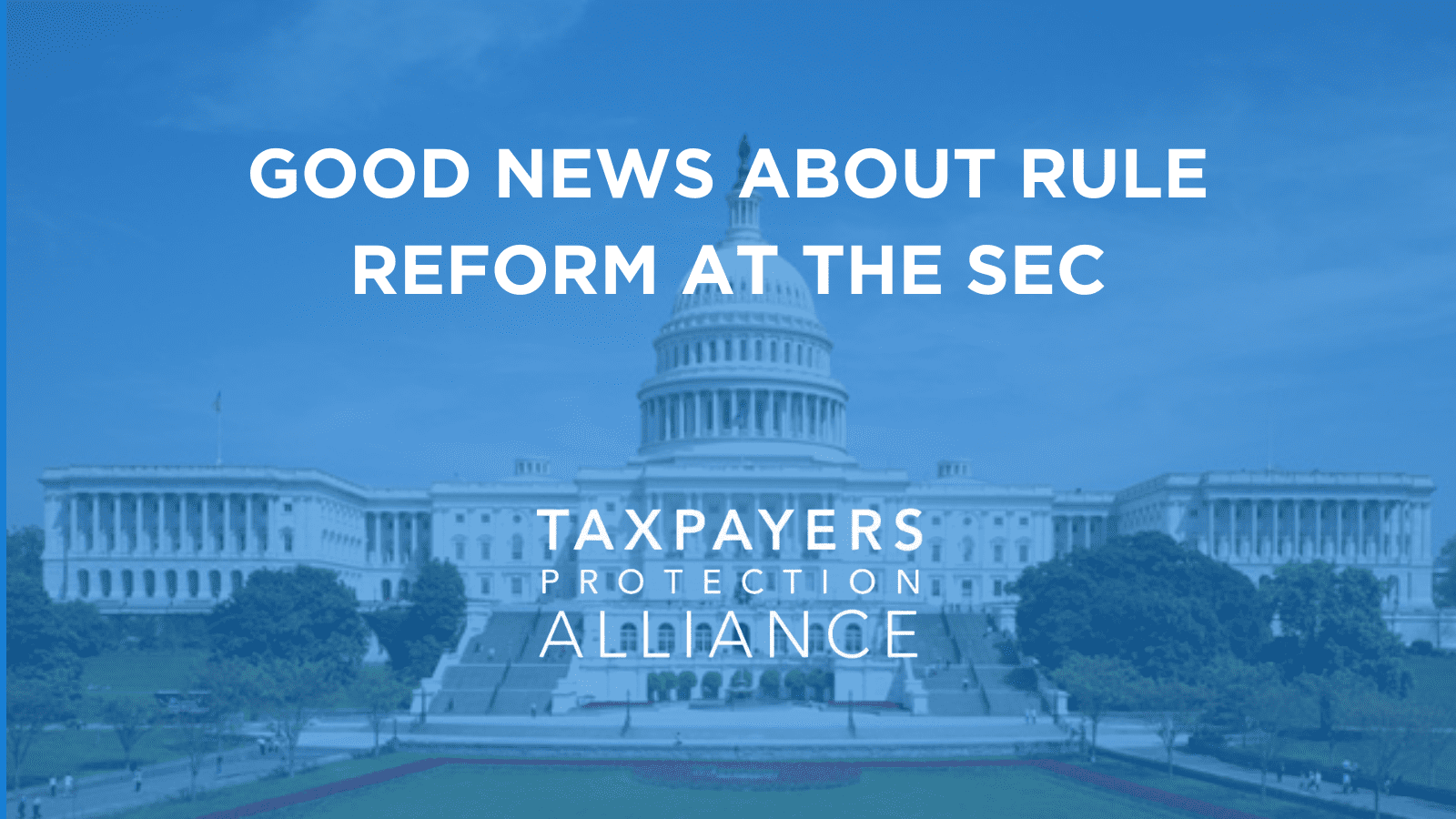
Good News about Rule Reform at the SEC
Taxpayers Protection Alliance
June 26, 2025
The Securities and Exchange Commission (SEC) was established in response to the 1929 stock market crash, which was followed by the Great Depression. The Securities Exchange Act of 1934 (the agency’s parent statute) sought to provide investors with greater access to information and established the SEC for the purpose of “protecting investors, maintaining fair, orderly, and efficient markets, and facilitating capital formation.” Since its creation, despite some failures, the SEC has done useful work to protect investors through the pursuit of its narrow mission. However, in recent years, the SEC has instituted ever more overreaching regulations, which have raised unnecessary barriers and stalled innovation. Several of the rules passed during the tenure of Gary Gensler (the Biden-appointed SEC chairman) are prime examples of the regulatory overreach that has become common at the SEC in recent years.
Despite this trend, the SEC appears to be changing its approach to regulation under the new leadership of Trump-appointed Chairman Paul S. Atkins. Earlier this month, the SEC rolled back 14 Gensler-era proposals. The recent push to cut burdensome regulation signals an attempt to streamline the agency’s work and a renewed commitment to the agency’s proper mission. (Other agencies can learn from the SEC.)
The rollback of the Predictive Data Analysis Rule is an excellent example. The rule sought to regulate conflicts of interest for brokers working with retail investors. Specifically, it targeted game-like app features and the use of AI by brokers and investors. Although preventing conflicts of interests is a laudable goal, the rule requires that conflicts of interests be “neutralized” or “eliminated” rather than merely disclosed. This requirement forced firms to adhere to a strenuous compliance standard. And although the rule was intended to be technologically neutral, compliance concerns scared firms away from utilizing technology that could have been used to help investors.
Another move toward refocusing the role of the SEC was the reversal of the rule governing advisors’ and others’ disclosure of environmental, social, and governance (ESG) factors. The enhanced reporting requirement sought to increase transparency and combat “greenwashing” by ensuring that ESG-related information is communicated to investors; however, this rule was largely redundant considering the abundance of SEC transparency regulations, which already require material information to be disclosed. In addition, the ambiguous definition of “greenwashing” complicated efforts to provide this kind of information to investors. The rule would have resulted in heavy compliance costs and would likely have distorted investor behavior.
Further, under Atkins, the SEC withdrew the proposed Exchange Definition Rule. The proposed amendment would have expanded the definition of “exchange” to include companies that are not currently under the SEC’s jurisdiction. Under this amendment, the SEC’s jurisdiction would have extended to include crypto and decentralized finance companies. In addition to preventing an unlawful expansion of the SEC’s jurisdiction, the decision to withdraw this rule is a win for innovation in the market and limited government.
The SEC’s recent rule withdrawals are a step towards clearing the regulatory clutter that has accumulated at the agency over the past decade. These efforts to cut unnecessary regulations demonstrate a renewed faith in the common sense of investors and a commitment to the SEC’s mission of “protecting investors, maintaining fair, orderly, and efficient markets, and facilitating capital formation.” In the wake of the radical expansion of agency operations during Gensler’s tenure, Atkins’ leadership — although still new — has done much to re-narrow the scope of the SEC’s work and once again to confine the agency to its proper role.
